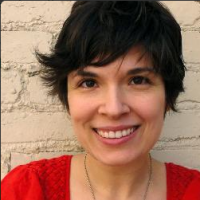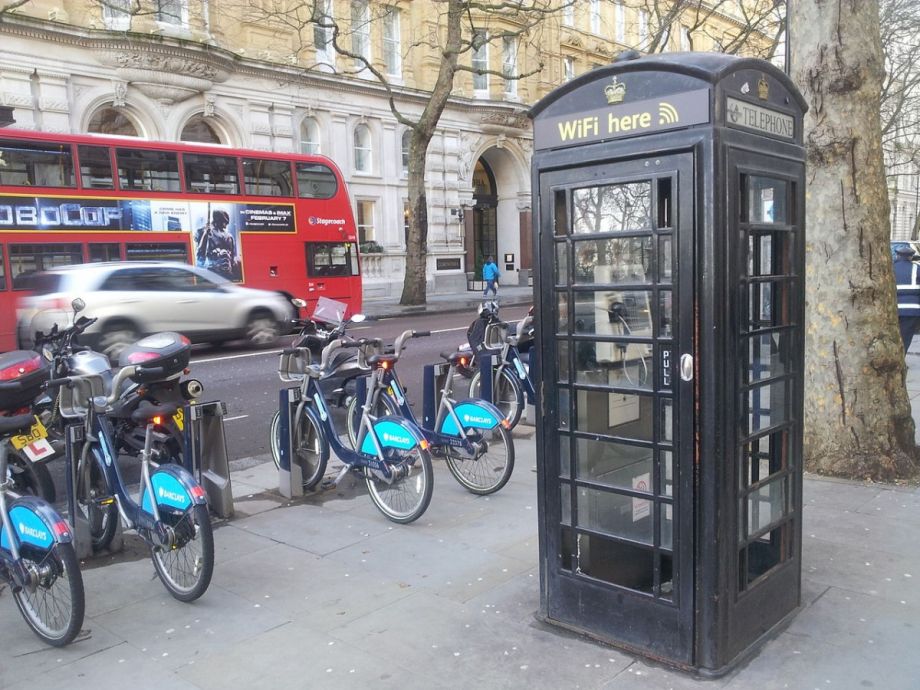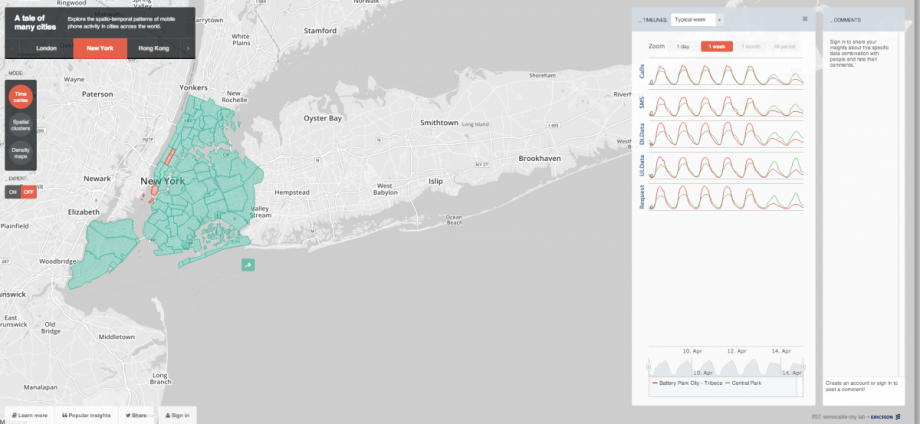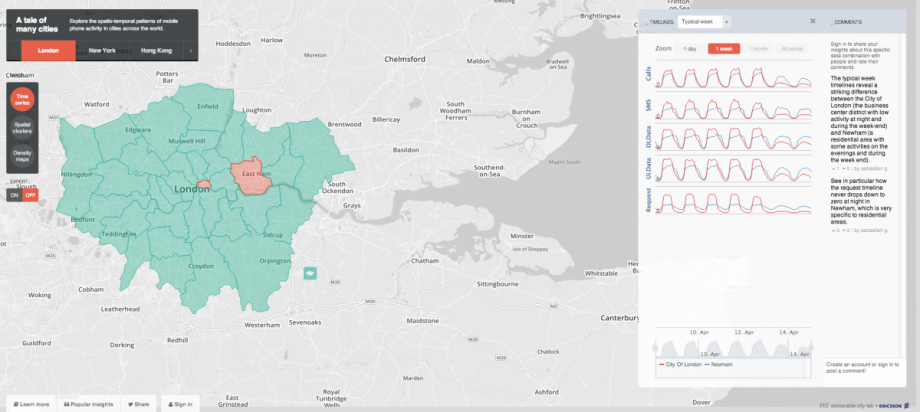Most people these days have a cell phone, and many people — at least in developed urban centers — have not just a cell but a smartphone. Those phones ping cell towers every time they download an email, send a text or make a call.
By taking those pings from a 10-month period in New York, Los Angeles, Hong Kong and London, researchers at MIT’s SENSEable City Lab and Ericsson mapped out how people interact with their cities.
“The main idea was to look at the signature of humanity,” says Sébastian Grauwin, the postdoc who is the lead author of a paper presenting the project’s initial findings. “To look at how people behave, how different cities compare and what that can tell us about people living in cities.” The project also includes a public-facing website built by Pierrick Thébault, a design researcher at SENSEable City Lab, which he says is the first time so much cell-phone data has been made available for the public to poke and play with.
The (anonymized) cell-phone records show a lot of common-sense things, like that fewer people use their phones in business districts at night (because most of them have gone home), or that people often use their phones less on weekends. People in Central Park on weekends upload a lot of data (perhaps their selfies) but don’t make as many calls. People send a lot of text messages on New Years’ Eve.
“Maybe the more surprising and interesting facts [come] when you compare cities,” Grauwin said.
Grauwin said that most business districts look the same across cities: big spikes of activity starting at 9 a.m. and going until 5 or 6 p.m. But in the evening, in residential neighborhoods, people behave differently. “In Hong Kong, people are using their mobile devices to look at online video at night. People don’t do that in London. In the U.S., people send SMS [text messages] late in the evening, so that is specific to America.” He hypothesized that many of those texts are from Americans voting on reality TV shows.
Some of these differences can be explained by the differences in typical mobile plan pricing. In Hong Kong, data is very cheap; in London, it’s expensive, so people stream videos over WiFi rather than the cellular network. (Plus, Hong Kong users tend to have more modern phones — bigger screens, better for streaming video.)
The researchers are hoping that the public takes to the open data and finds their own patterns, especially after they add more data to layer on top of the cell records, like real estate prices and geo-located tweets, which they say will happen in the next month. “We don’t know exactly what people will find,” Thébault said.
In the short-term, even if the data isn’t providing shocking surprises, it’s got at least one satisfied customer: Ericsson. The data, Grauwin says, is helpful for cell companies to know where they need to put more towers or how to best manage their networks. Perhaps they could use the data to determine when it’s safe to turn certain base stations off, saving energy. And the project serves one more purpose: convincing the general public that tracking their calls, anonymized and in aggregate, isn’t creepy. Thébault said he wants people to know that “it’s not dangerous to collect data, and it can be used for good, to help people rethink their city.”

Rachel Kaufman is Next City's senior editor, responsible for our daily journalism. She was a longtime Next City freelance writer and editor before coming on staff full-time. She has covered transportation, sustainability, science and tech. Her writing has appeared in Inc., National Geographic News, Scientific American and other outlets.
Follow Rachel .(JavaScript must be enabled to view this email address)










